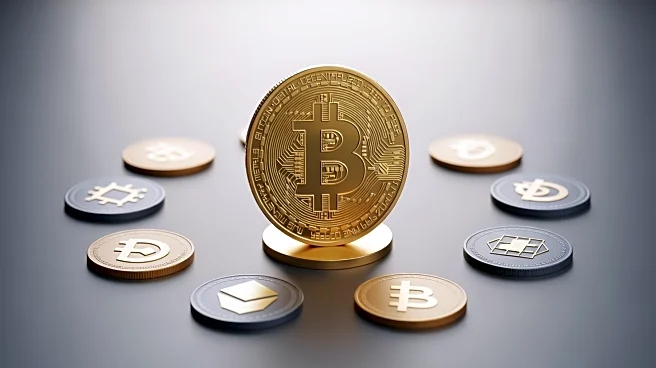What's Happening?
The retail stablecoin payments market is showing signs of maturity, transitioning from rapid, incentive-driven growth to more sustainable, organic activity. According to the Q3 2025 Stablecoin Retail Payments
Index released by Orbital in partnership with Artemis, the sector experienced a cooling in Q3, with transaction counts decreasing from 1.33 billion to 1.21 billion and daily active users stabilizing at 3.6 million. Despite this slowdown, these figures remain significantly higher than early 2025 levels. The report highlights a narrowing gap between adjusted and unadjusted volume, indicating that genuine payments such as P2P transfers, remittances, and SME transactions are driving a larger share of the overall throughput. Luke Wingfield Digby, co-founder and head of corporate development at Orbital, emphasized the shift towards utility, stating that stablecoins are becoming a universal payment layer.
Why It's Important?
The shift towards organic growth in the stablecoin market suggests a maturation of the sector, with implications for both users and the broader financial ecosystem. As stablecoins become more focused on utility rather than speculative growth, they could offer more stable and reliable payment options, particularly in regions with high inflation or disrupted markets. This transition may benefit small and medium enterprises and individuals who rely on stablecoins for everyday transactions. Additionally, the divergence in stablecoin usage between DeFi and retail payments highlights the evolving role of stablecoins in different financial contexts, potentially influencing future regulatory and market developments.
What's Next?
The report suggests that the next step for stablecoins is to enhance their usability across networks, use cases, and geographies, aiming to become a truly universal payment layer. This could involve bridging existing networks and expanding stablecoin acceptance in various sectors. As stablecoins continue to gain traction, stakeholders such as financial institutions, regulators, and technology providers may need to adapt to the changing landscape, potentially leading to new partnerships and innovations in payment solutions.
Beyond the Headlines
The cooling of the stablecoin market and its shift towards utility may have deeper implications for financial inclusion and economic stability in regions with volatile currencies. As stablecoins become more integrated into everyday transactions, they could provide a buffer against local currency fluctuations, offering a more stable financial environment for users. This development may also prompt discussions on the ethical and regulatory aspects of stablecoin usage, particularly in terms of privacy, security, and the role of fiat gateways.











